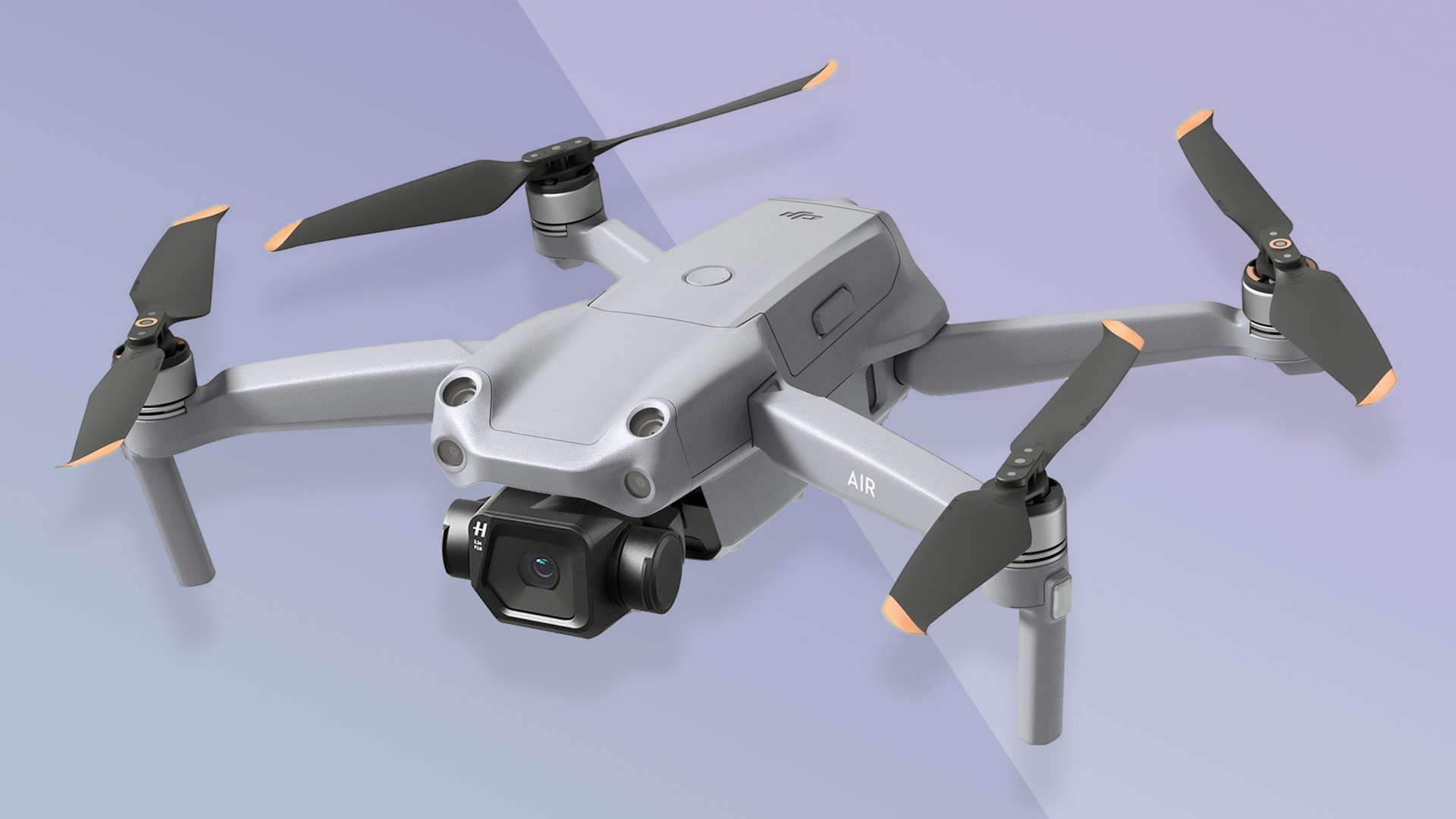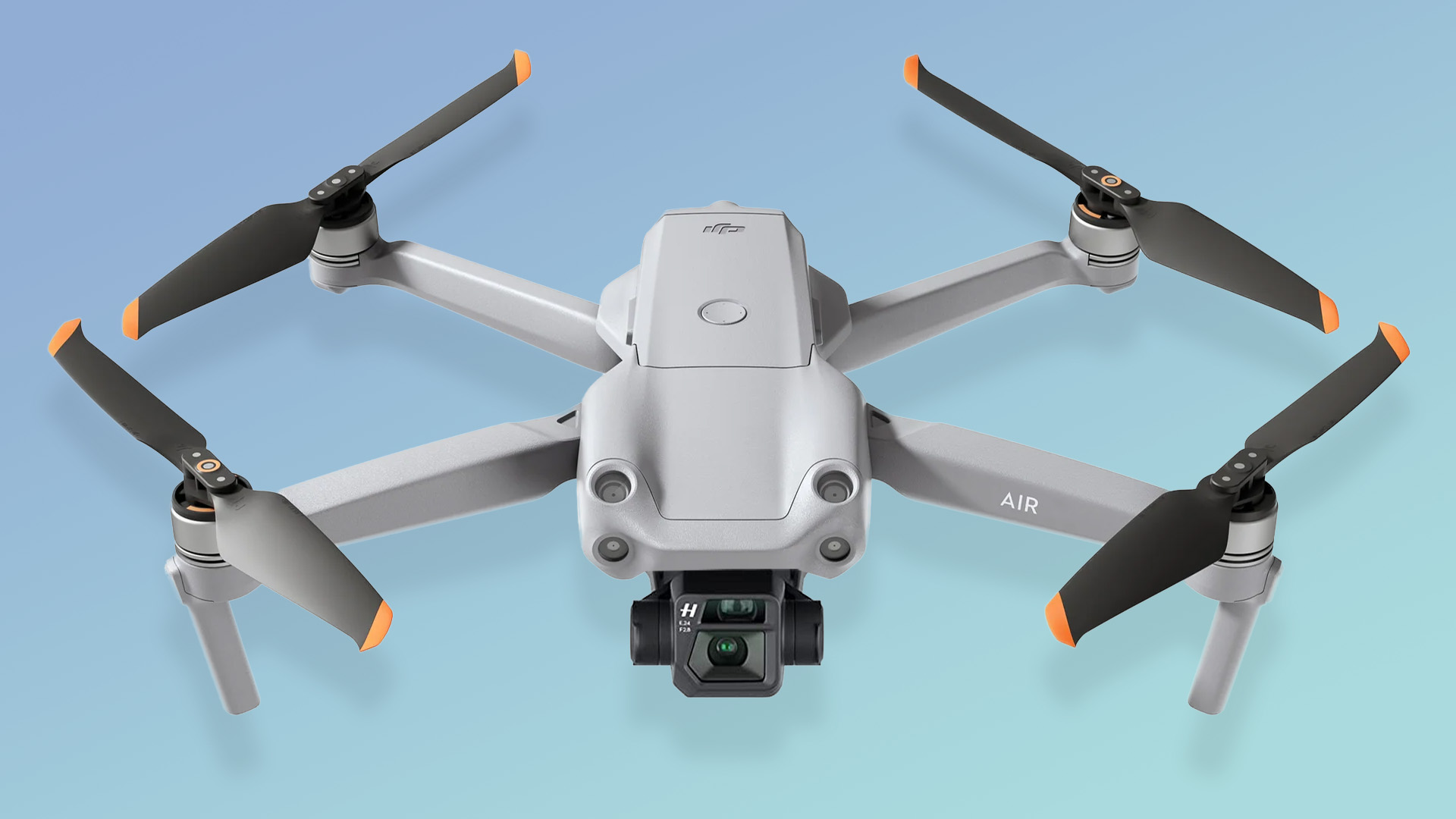DJI Air 3: What we want to see
Will there be big upgrades for DJI’s next mid-size drone?

The DJI Air 3 is one of the key drones we expect to see in 2023.
If you’re new to drones, DJI’s naming system can be confusing. However, the latest models go some way to clear up the confusion.
You have Mavic drones right at the top, Air models in the middle, and then the Minis at the bottom - the ones we think most people buy. They are relatively affordable. The middle child Air range has had the least love of late. Perhaps it’s time for the DJI Air 3 to rise into view.
But what could, or should, it offer? We’ve dug into the wider DJI drone range and the tech available to manufacturers today to uncover the features we want, and the features that are the most feasible additions for a drone due this year. But let’s start with some estimates on the release date and cost.
DJI Air 3 price and availability
The DJI Air 3 will be a follow-up to the DJI Air 2S. That drone launched in April 2021 and was itself the successor to the DJI Air 2 from April 2020. This suggests the DJI Air Air 3 could arrive around April 2023. It’s no surprise that a 2022 release was missed given the component shortages and myriad other issues facing manufacturers these days.
However, a release schedule image posted recently by DealsDrone suggests The Air 3 may be released a little later, in May 2023. It also suggests April will bring the DJI Inspire 3 instead. Inspire is DJI’s range of pro-cinematography drones — the Inspire 2 was released years ago, back in 2016.
We may also see the Air series rise in cost considering there’s not a vast gulf in price between the mid-range Air 2S (from $999 / £899 / AU$1,699) and ‘affordable’ DJI Mini 3 Pro (from $759 / £709 / AU$1,119).
Sign up for breaking news, reviews, opinion, top tech deals, and more.

New Micro Four Thirds sensor
The DJI Mini 3 and Mini 3 Pro saw reasonably large sensors introduced to DJI’s smallest drones. Is a 1-inch sensor going to be enough when the much cheaper models already have 1/1.3-inch chips?
We say no. The next step up is a MFT sensor — as seen in the DJI Mavic 3 Classic. The Sony IMX383 chip used in the Air 2S is also five years old, and there aren’t many newer successors bar the Sony IMX989, which has been “built for smartphones”.
The Micro Four-Thirds Sony IMX472 chip is the best fit for the job, and it may be the very sensor used in the DJI Mavic 3 Classic. That information does not appear to be available at present.
A larger sensor will mean better low-light performance, higher dynamic range and less noise. Sony’s IMX472 chip is a 20-megapixel MFT sensor with 3.3-micron pixels, and it was announced in 2021. It’s far newer than the sensor in the Air 2S. It also has some pretty eyebrow-raising capabilities.
Improved 120fps 4K (or 5K) video
One of these skills is a readout mode of 120fps at 12-bit color depth, using the full 5280 x 3956 pixels of the sensor. Will an Air 3 have the 120fps 5K mode this suggests? That would be nice. However, it would be conspicuously better than the fairly recent Mavic 3 Classic which offers 120fps 4K and 5.1K at 50fps.
Still, when you dig into the Sony IMX472’s documentation you find it might be easier for the drone to capture 120fps at 5K than 4K. It doesn’t have a native drive mode suitable for 4K capture, which — much as we are not software engineers — could surely cause a headache or two for DJI.

Extended transmission range
An upgrade in transmission standards for the DJI Air 3 doesn’t see us go out on quite such a limb. The Air 2S uses Ocusync 3.0, and an Air 3 is surely due a bump up to Ocusync 3.0+.
This will give you extra range if you live in the right country — basically the US — of up to 9.32 miles / 15km. It also unlocks a 1080p, 60fps preview image when reviewing footage live using a DJI remote with a screen.
The DJI Air 2S only gets a 1080p, 30fps preview picture up to 12km thanks to O3.0’s lower bandwidth.
Faster charging times
Drone fans always need spare batteries. But fast charging really lowers the volume of battery headaches in our experience.
The DJI Air 2S’s battery can be charged at a maximum of 38W, whereas the newer Mavic models support 65W. Faster charging could potentially drop the Air 3’s charging time from around 95 minutes down closer to an hour, or even less.
Improved flight time
DJI has managed to pull off some fairly impressive increases in flight time in its sub 250g drones over the past 12 months.
An upgrade from Mini 2 to Mini 3 takes you from 31 minutes of flight time to 38 minutes. That’s a 22% increase, from just a 9% increase in battery capacity. And that suggests some pretty important efficiency savings are to be found inside.
We’d like to see a similarly healthy increase in the jump from DJI Air 2S to Air 3. A reasonable, if perhaps slightly over-optimistic, goal would be 40 minutes. While 36 minutes seems more likely, this is a “what we want” list after all.

Better obstacle sensors
The DJI Air 2S has forward, backward, downward and upward sensors. However, something the Air system has never had is a true omnidirectional sensing system – additional left and right ‘lateral’ sensors – that the DJI Mavic 3 and Mavic 3 Classic offer.
Such object sensing allows for more dynamic forms of motion automation. And having it in a wider array of drones, like the DJI Air 3, would mean DJI could justify putting more work into the development of such modes.
There’s still plenty of room for the Mavic 3 Classic to retain an upper hand here too. The DJI Air 2S’s sensor cameras have a much narrower field of view than the Mavic’s. And where the Mavic uses a binocular, two-camera system in each direction, the Air 2S uses a time of flight sensor to judge the distance from the ground.
We think left/right object sensing in the DJI Air 3 is not an unreasonable expectation, although it won’t feel like that much of an upgrade unless there are new or upgraded automation modes.
We’ve laid out both optimistic and realistic expectations in a future DJI Air 3, let’s see if DJI plays it safe or pushes out the boat. Either way, it’s the final model in the range to be updated and its new name will complete a distinct range of DJI drones for 2023.

Andrew is a freelance journalist and has been writing and editing for some of the UK's top tech and lifestyle publications including TrustedReviews, Stuff, T3, TechRadar, Lifehacker and others.